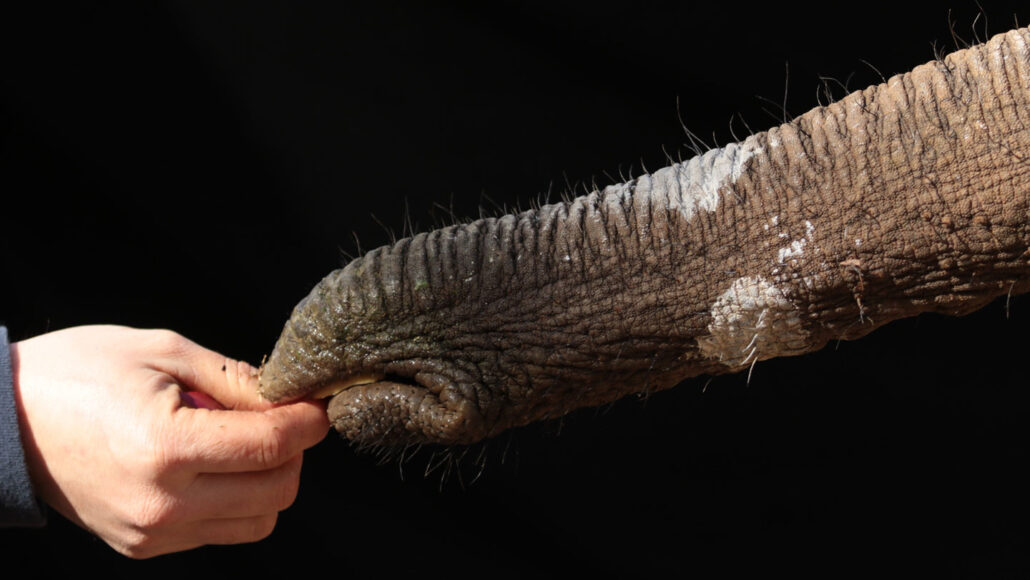The top side of an elephant’s trunk is surprisingly stretchy
New insight into elephant skin could inspire artificial-skin suits for soft robots

The tough upper skin of an elephant’s trunk is stretchier than the wrinkled skin underneath, new research shows.
A. Schulz, Adam Thompson/Zoo Atlanta
By Meghan Rosen
On a sunny Georgia day at Zoo Atlanta in 2020, Kelly the African bush elephant reached for a snack. Her action revealed something strange. The skin on the top of her trunk stretched more than the skin underneath. High-speed cameras caught this on video.
“But that didn’t make any sense,” says Andrew Schulz. He’s a mechanical engineer at Georgia Tech in Atlanta. (And this was not the first time he made some startling findings about trunks — such as how elephants use them to move air, liquids and solid objects.) Scientists had assumed that the skin on elephant trunks largely stretch the same way all over. Scientists had assumed that the skin on elephant trunks largely stretch the same way all over. Schulz sent data on Kelly and a male elephant, Msholo, to colleagues for a second opinion. “Oh yeah, your data is wrong,” he remembers them saying.
But follow-up experiments would show otherwise. Those studies involved stretching pieces of elephant skin in the lab. And they showed the same strange phenomenon. The skin on the top and bottom of the trunk were totally different. “Talk about a great day as a scientist!” Schulz says. “That’s when we really started to believe that what we were saying was true.”
The tough upper skin on an elephant’s trunk crumples into creases like the folded skin of a shar-pei puppy. The skin on the underside, however, is only lightly wrinkled. Schulz and his colleagues now show that the bunched upper skin is about 15 percent stretchier than the lower skin.
The team shared its findings August 2 in the Proceedings of the National Academy of Sciences.
That extra stretch up top probably helps elephants reach down and wrap their trunks around a log or a tree branch, Schulz says. Meanwhile, the less stretchy skin underneath gives the animals a good grip.
The team also observed that the trunk extends like a telescope. The tip stretches out first, followed later by sections closer to the elephant’s head. And at the trunk’s tip, skin does most of the straining, not muscle. At least, that’s what computer models now suggest.
Scientists have long studied the muscles in elephant trunks. The skin on those trunks has largely been overlooked, says Lucia Beccai. This soft-robot developer works at the Italian Institute of Technology in Genoa. She wasn’t involved in the elephant research. But she is interested in using knowledge about animals to build better robots.
Artificial skin is often modeled after human skin, Beccai says. Researchers could learn a lot from other animals, though. Understanding how Kelly’s and Msholo’s folds and wrinkles stretch is “surely information that will improve the design of soft robots,” she says.







